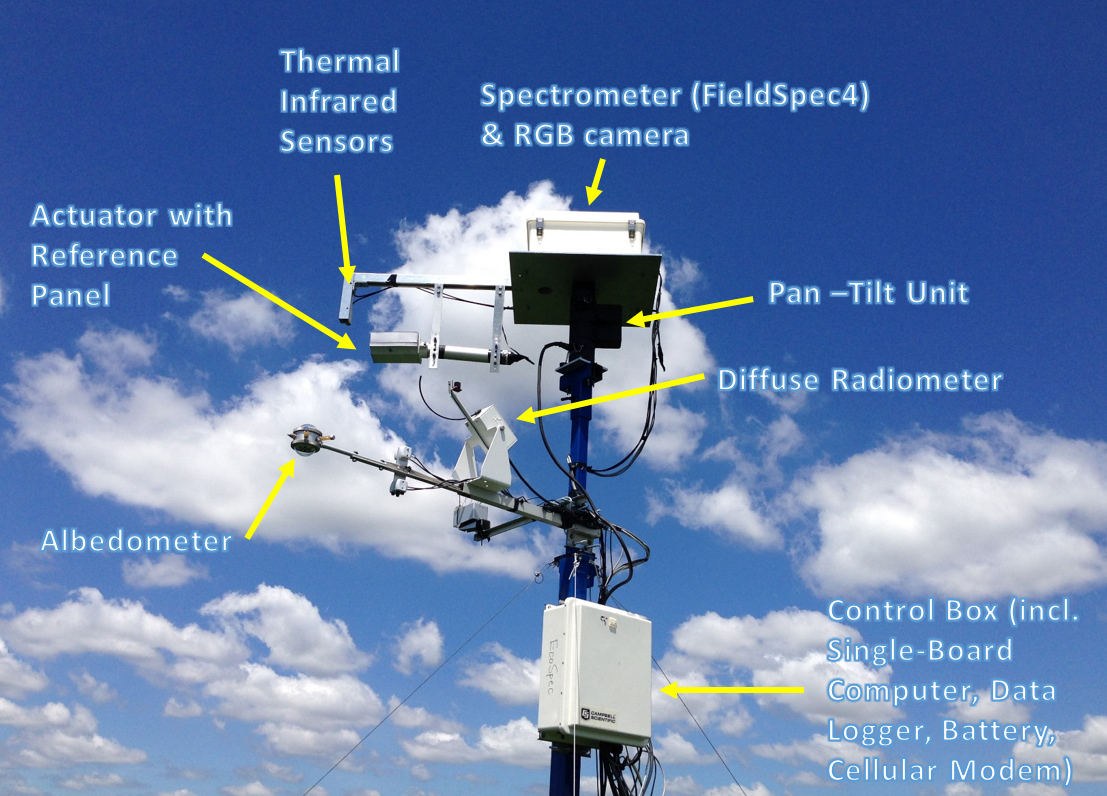How do local-scale phenomena relate to large-scale phenomena, and vice versa? This is one of the key questions for improving climate models. Because the atmosphere, plants, and soils play important roles in the Earth’s carbon and water cycles, a better understanding of atmosphere‑biosphere interactions near the land surface is crucial for accurately forecasting the future climate, monitoring carbon fluxes, and understanding ecosystem services. EcoSpec is a study of how plants and ecosystems respond and contribute to environments. It uses hyperspectral remote sensing, a method independent from traditional eddy covariance.
Environmental conditions such as temperature, moisture, and light strongly influence photosynthesis, respiration, and evapotranspiration in ecosystems. These functions vary with the composition and properties of the land surface and their changes. Spectral reflectance of the land surface is a function of the composition, abundance, and configuration of surface features—such as plants and soils—and their physical and chemical properties.
By applying the principles of biophysical remote sensing, scientists from the Environmental Science and Mathematics and Computer Science divisions at Argonne have prototyped a method that uses hyperspectral reflectance measurements of land surfaces to investigate local-scale, high‑temporal‑frequency interactions between the near-surface atmosphere, the terrestrial biosphere, and dynamics of ecosystem functions.
The EcoSpec optical tower system is equipped with a hyperspectral sensor (or spectrometer) with more than 2,000 spectral channels, thermal infrared sensors, an RGB (red, green, blue) camera, a diffuse radiometer, and an albedometer. The system can be 100% solar powered and is controlled by a single-board computer that supports synchronized movement of instruments, collects data every minute from dawn to dusk, and transmits the data wirelessly throughout growing seasons.
The EcoSpec team first determined the indicative power of hyperspectral reflectance for plant activities and ecosystem functions across the growing season. Hyperspectral data collected from soybeans throughout the growing season indicated that plant properties such as green biomass, light use efficiency, and chlorophyll content primarily control photosynthesis during different parts of the season. Ancillary true-color photos recording land surface conditions during hyperspectral measurements showed intricate variation of foliar cover, soil exposure, shadow, and surface soil wetness throughout the growing season, which could help describe the observed spectral reflectance values.
EcoSpec was deployed to the Fermi Agricultural Site, one of the FLUXNET sites, during two growing seasons. With the agricultural system as a case study, the EcoSpec team prototyped data collection and quality control protocols for high-temporal-frequency hyperspectral remote sensing and integrated analytics for hyper-dimensional time-series forecasting.


